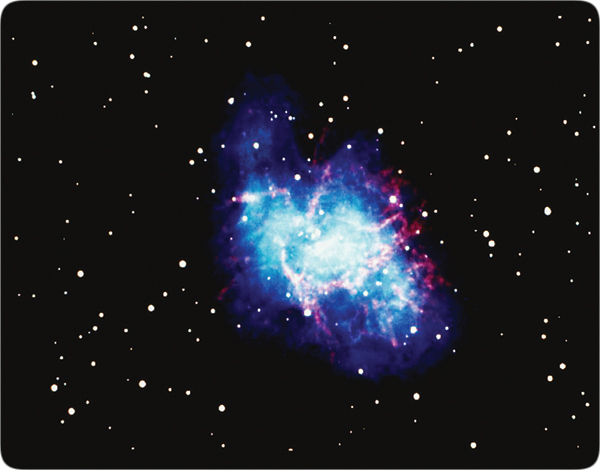Below is the online edition of In the Beginning: Compelling Evidence for Creation and the Flood,
by Dr. Walt Brown. Copyright © Center for Scientific Creation. All rights reserved.
Click here to order the hardbound 8th edition (2008) and other materials.
90. Supernova Remnants
In galaxies similar to our Milky Way Galaxy, a star will explode every 26 years or so.a These explosions, called supernovas, produce gas and dust that expand outward thousands of miles per second. With radio telescopes, these remnants in our galaxy should be visible for a million years. However, only about 7,000 years’ worth of supernova debris are seen.b So, the Milky Way looks young.

Figure 35: The Crab Nebula. In A.D. 1054, Chinese observers (and perhaps Anasazi Indians in New Mexico and Arizona) witnessed and described a supernova. It was visible in daylight for 23 days and briefly was as bright as a full moon. Today, remnants from that explosion comprise the Crab Nebula.
Thanks to radio telescopes, most of these remnants should be visible for a million years. At the rate supernovas are occurring in galaxies like ours, we have only about 7,000 years’ worth of remnants.